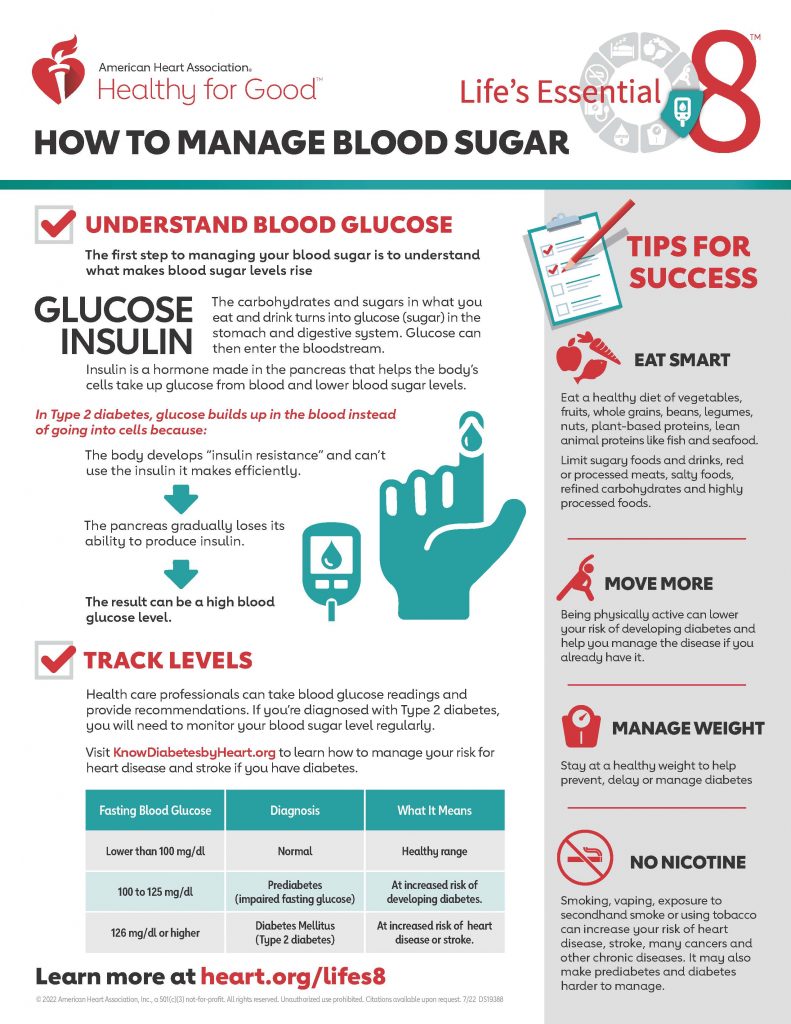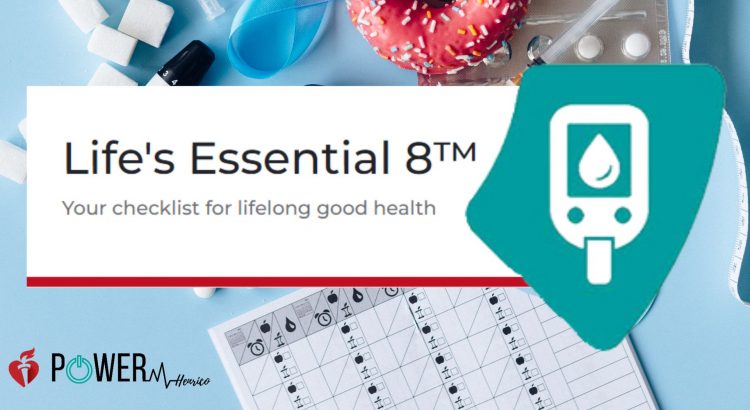Knowing how sugar (glucose) and insulin work in the body is essential for understanding how diabetes impacts health. Diabetes happens when the body has a chronic build-up of extra sugar in the bloodstream, causing blood sugar (also called blood glucose) levels to rise higher than average, known as hyperglycemia. When you eat, your body breaks food down into sugar and sends it into the blood. Insulin, a hormone made by the pancreas, helps move the sugar from the blood into your cells. When sugar enters your cells, it is either used as fuel for energy right away or stored for later use. In a person with diabetes, there is a problem with insulin. And not everyone with diabetes has the same insulin problem. There are different types of diabetes – type 1, type 2, and gestational diabetes. If you have diabetes – type 1, type 2, or gestational – your body either doesn’t make enough insulin, can’t use the insulin well, or both.
 Nutrition and physical activity are essential parts of a healthy lifestyle when you have diabetes. Following a healthy meal plan and being active can help keep blood sugar in your target range. Managing blood sugar is about balancing what you eat and drink with physical activity and diabetes medicine, if you take any. What you choose to eat, how much you eat, and when you eat are critical in keeping your blood glucose level in the range your healthcare team recommends. The American Diabetes Association recommends using the Diabetes Plate Method to create perfectly portioned meals with a healthy balance of vegetables, protein, and carbohydrates – without counting, calculating, weighing, or measuring.
Nutrition and physical activity are essential parts of a healthy lifestyle when you have diabetes. Following a healthy meal plan and being active can help keep blood sugar in your target range. Managing blood sugar is about balancing what you eat and drink with physical activity and diabetes medicine, if you take any. What you choose to eat, how much you eat, and when you eat are critical in keeping your blood glucose level in the range your healthcare team recommends. The American Diabetes Association recommends using the Diabetes Plate Method to create perfectly portioned meals with a healthy balance of vegetables, protein, and carbohydrates – without counting, calculating, weighing, or measuring.
Remember, along with diet and medication, regular physical activity is an integral part of managing diabetes or dealing with prediabetes. When your body is active, your cells become more sensitive to insulin, working more effectively to lower your blood sugar. Light walking is a great place to start and a great habit to incorporate into your life. Walking with a loved one or just by yourself while listening to an audiobook are good ways to move more. If you are struggling with getting started or feeling overwhelmed by the idea of creating a more active life, there are health coaching resources available to support you through this behavior change journey.
Community resources are available if you are concerned about your risk for developing diabetes or are looking for help in managing your current diabetes diagnosis.
Anthem ConditionCare offers tools and support to Henrico County health plan subscribers and their covered family members for diabetes management.
The Balm in Gilead – Southeast Diabetes Faith Initiative – Virginia, 620 Moorefield Park Drive, Suite 150, Richmond, VA 23226. (804) 644-2256
Bon Secours Center for Healthy Living Sarah Garland Jones Center, 2600 Nine Mile Road, Richmond, VA 23223. (804) 287-7941
VCU Health Hub at 25th, 1330 N. 25th Street, Suite A, Richmond, VA 23223. (804) 628-6401
Henrico County Employee Health Services offers health education and individualized dietary counseling. 7740 Shrader Rd, Suite A, Henrico, VA 23228. (804) 501-1600
Resource list:
‘Managing blood sugar’ link: https://www.heart.org/en/healthy-living/healthy-lifestyle/lifes-essential-8/how-to-manage-blood-sugar-fact-sheet
‘Diabetes Plate Method link: https://www.diabetesfoodhub.org/articles/what-is-the-diabetes-plate-method.html#:~:text=The%20Diabetes%20Plate%20Method%20is,you%20need%20is%20a%20plate!
‘Health coaching resources’ link: https://henricova.sharepoint.com/Fitness_Wellness/SitePages/HealthCoaching.aspx
‘Diabetes risk’ link: https://doihaveprediabetes.org/take-the-risk-test/#/
PDF: https://www.heart.org/-/media/Healthy-Living-Files/LE8-Fact-Sheets/LE8_How_to_Manage_Blood_Sugar.pdf
